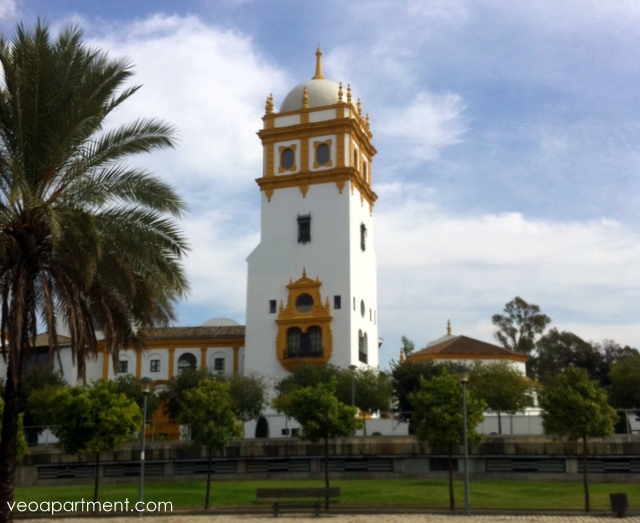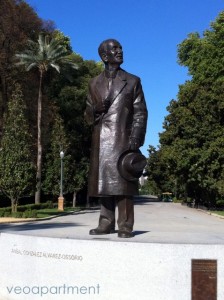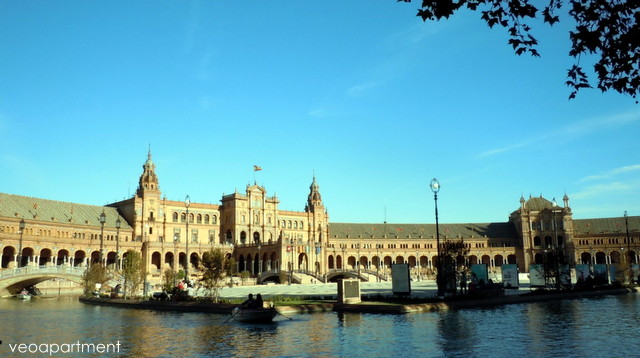Although different people have different priorities for the kind of holiday they want, and what they want to do (or not do) with their time, there are enough reasons for choosing Seville to suit most of them. First, there’s the weather. Spain has long been a popular destination for sun-seeking northerners, and although July and August are actually too sunny for some (including me, and I live here), the spring and autumn are as near perfect as you’re likely to find anywhere. Warm enough to be out and about (or lounging by the pool, if that’s what you’re after) in shorts and T-shirt without being uncomfortably hot or cold, and for eating al fresco. And Seville is the perfect place to come for both those things. Beautiful, colourful gardens and neighbourhoods of picturesque narrow streets and small squares to wander through, and lots of little tapas bars to stop in for a glass of wine and a snack.
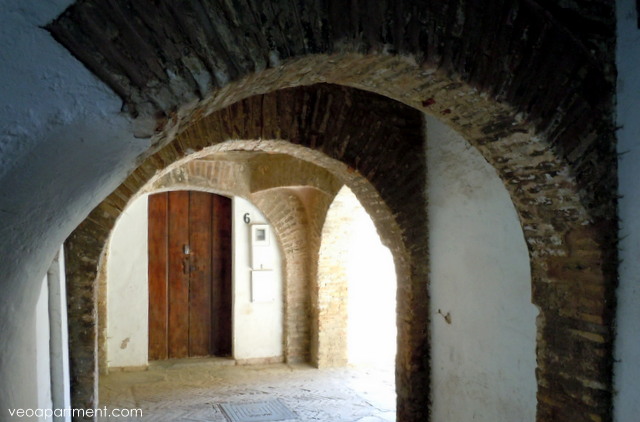 archway in Barrio Santa Cruz
archway in Barrio Santa Cruz
But although these are some of my favourite things to do, and in general beat the usual sightseeing type of activities, a city as venerably old and culturally important as Seville is going to have a few places that you have to go and see – both because they are actually well worth seeing, and because you don’t want to have to admit when you get home that you went to Seville and didn’t see them. So this is my list of the 4 things you have to see in Seville, in between the things that are actually important.
The Reales Alcazares (Royal Palace) is number one on the list, especially since being used for the filming of one of the locations in Game of Thrones. With origins dating back over a thousand years, and Europe’s longest serving official Royal residence, the 13th century palace of Peter I is regarded as one of the finest examples of Mudejar architecture in Spain, and the gardens are stunning too.
The Mudejar Palace
The Cathedral of Saint Mary of the See is the world’s largest Gothic Cathedral, and was built during the 15th century on the site of the Grand Mosque, of which the Giralda Tower (former minaret and now bell tower) and the wall and outer gate of the Courtyard of the Orange Trees still remain. Inside the Cathedral are the world’s largest gold altarpiece, the tomb of Christopher Columbus and a crocodile. The highlight, though, is the view from the top of the tower, reached by a ramp, not stairs, and the highest point inside the historic centre.
Courtyard of the Oranges
The Plaza de España in Maria Luisa Park was built as the Spanish pavilion for the 1929 Spanish American Pavilion, and is a magnificent colonnaded semi-circular building in a mix of styles from Mudejar to Regionalist surrounding an open space with a fountain and boating lake. It features wonderfully colourful tiles and bridges, and illustrations of scenes from the history of each of Spain’s forty provinces. An breathtaking backdrop that’s been the setting for a number of films, including Star Wars Episode II.
Plaza España
The Metropol Parasol is the world’s largest wooden building and Seville’s contribution to modern architecture, completed just five years ago. Apart from being unique in itself it houses one of the city’s provisions markets, has Roman ruins in the basement, and a walkway on the top with views across the city.
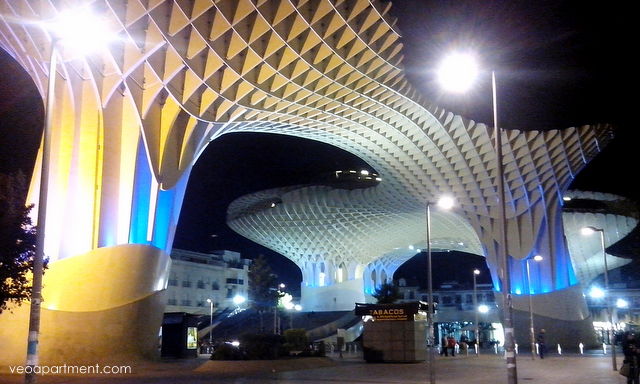
Metropol Parasol at night
Stay in one of our range of self-catering apartments to give yourself a base for all these activities. Happy holidays!
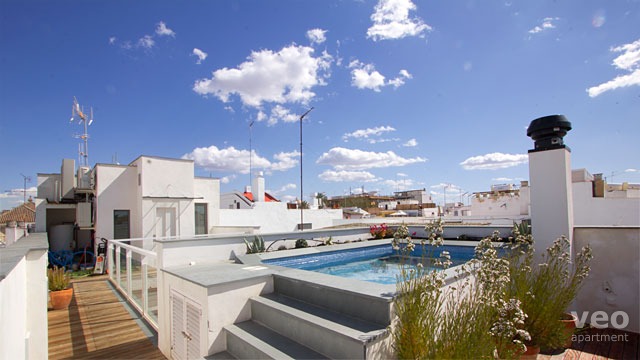
Teodosio Terrace Apartment
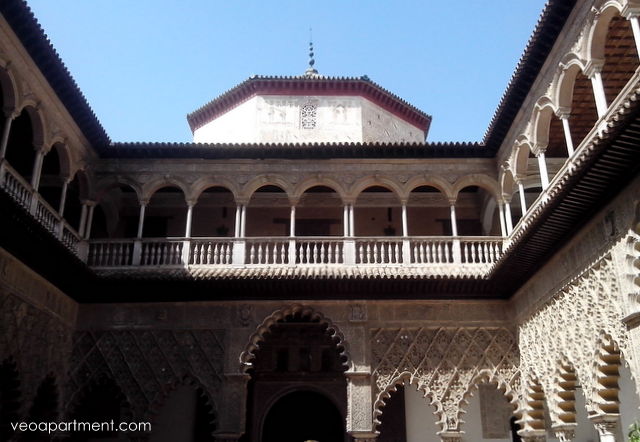
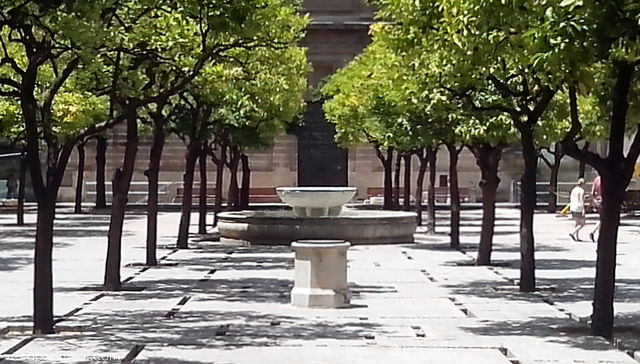
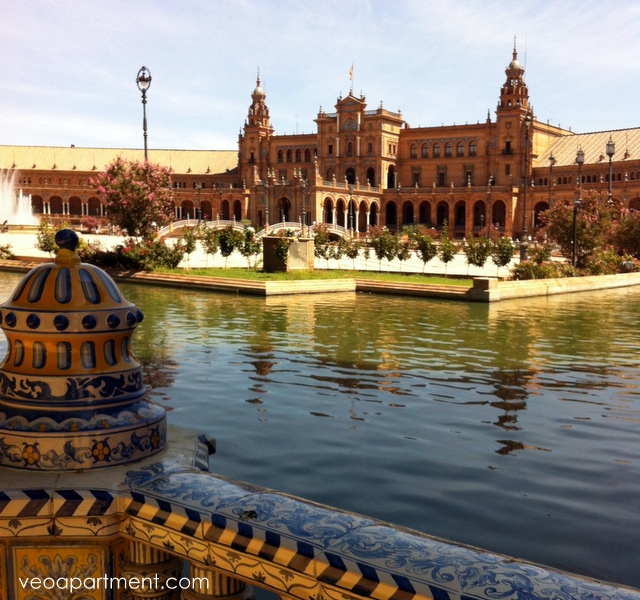
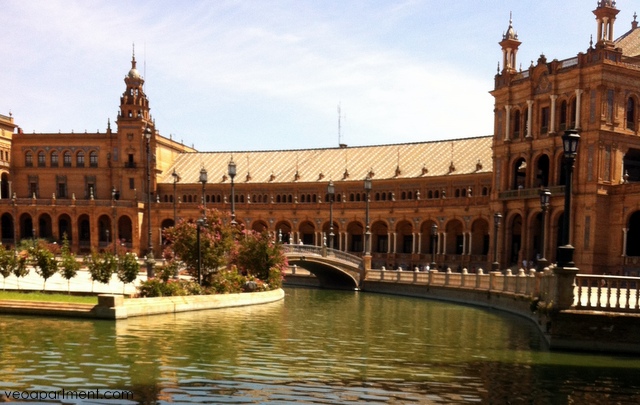 Plaza de España
Plaza de España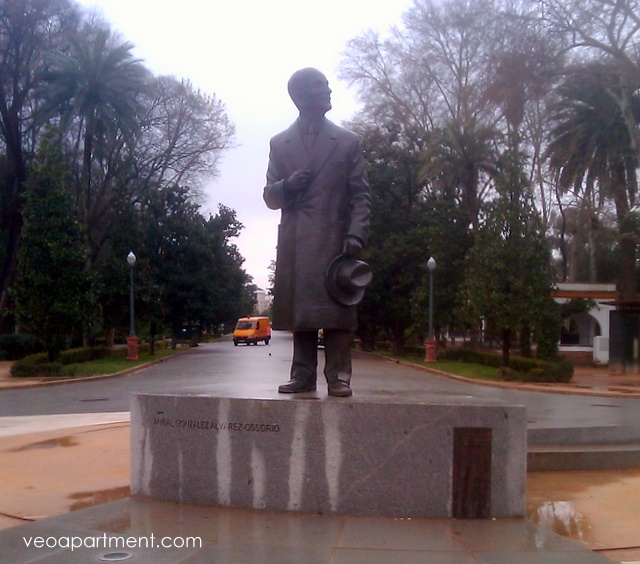 Statue of Anibal Gonzalez
Statue of Anibal Gonzalez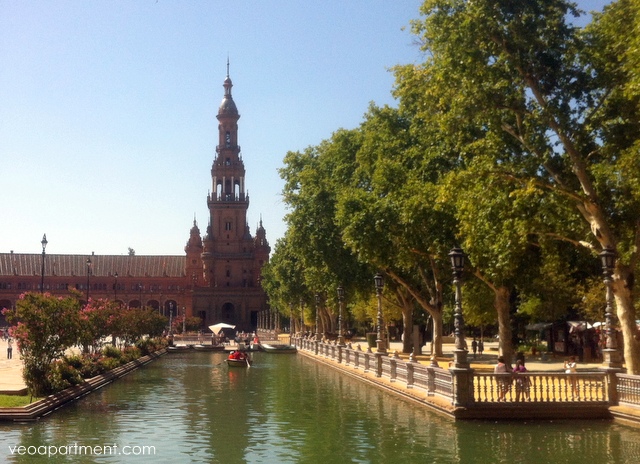 Plaza de España boating lake and tower
Plaza de España boating lake and tower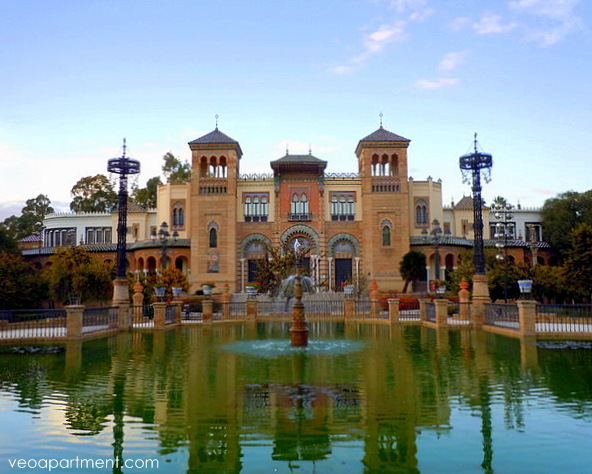 Palacio Mudejar
Palacio Mudejar